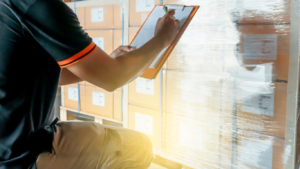
With ongoing growth and ever-changing tastes and preferences of e-commerce, 2024 promises to be a huge year full of much transformation in strategy. With the rise in consumer demand for quicker delivery times, convenience, and personalization of the shopping experience, it becomes quite necessary for businesses to move at a fast pace if they want to outrun or simply keep up with the competition. The following is an overview of some of the key trends that are likely to shape the future of e-commerce fulfillment, from same-day delivery options to sophisticated inventory management systems. In this article, go through a number of trends molding its future, what one should expect from it, and how one can prepare for the same.
Same-Day and Next-Day Delivery
Also, one strong reason for the rise of e-commerce fulfillment results in the form of demand for same-day delivery along with next-day delivery. While customers on one hand want orders to come fast, companies like Amazon, Walmart, and Target spearhead in developing and providing for the most efficient same-day delivery options.
Same-day delivery both by Walmart and Amazon raised the bar quite high, hence forcing other retailers into similar strategies if they are to survive. The trend is even not limited to General Merchandise but stretched to such specific categories as same-day grocery delivery, same-day furniture delivery, and even same-day delivery for clothes. Fast-paced models of delivery are evidenced by rising momentum from such services as Shipt Target and Costco same-day delivery.
The companies that would want to offer the same-day delivery to consumers would need to internally integrate the same-day courier services or develop functionality themselves to meet such consumers. Quick shipping, including the same day shipping, becomes of bigger importance for e-commerce websites, including Shopify enabling small and medium businesses to let rapid delivery options to customers.
Drone and Autonomous Delivery

The concept of drone delivery has come full circle, from what seemed like a storybook future to a very realistic translation and implementation in the real world for last-mile logistics. Companies like Amazon and Walmart are dipping their toes into testing the waters by extending their same-day delivery capabilities through drone delivery. For example, Amazon Prime Air and Walmart drone delivery are leading from the front in attempts that are targeted at ensuring that there is a reduction in time consumption in delivery while end-customer satisfaction is increased.
Drone, package or autonomous ground vehicle delivery refers to fast and efficient delivery mechanism over small distance.
Most importantly, these technologies will cut last-mile delivery costs that would otherwise bring about traffic congestion and environmental degradation. Innovations such as drones becoming common and integrated into package delivery have made it quick and efficient for any business to deliver their product to its customers in the final mile delivery and last mile tracking.
Advanced Inventory Management Systems
Good and cautious inventory management ensured that e-commerce businesses can meet the requirement of customers long ago. Companies performing in a situation of high demand for quick delivery have to implement advanced inventory management software. Applications like Zoho Inventory, InFlow Inventory, QuickBooks Inventory Tracking, and Shopify Inventory Management do the power for maintaining the level of stocks, tracking products, and maintaining an effective flow of inventory.
The inventory management that would help a small business while the operation of resources still remains minimal. This comes with features like tracking inventory, controlling the same, and even barcode inventory systems that enable a small business to maintain smooth flow regarding stocks by maintaining real-time quantitative statistics.
The trend for automated inventory management in 2024 will be inflated by automated inventory systems, counting, and monitoring systems. Apart from demand forecasting, the application of the power of AI and machine learning algorithms to the inventory systems has given businesses the power to optimize their stock levels and automate the replenishment processes for operating effectively with minimum human input errors.
Demand forecasting, in recent times, has become an intrinsic component of e-commerce fulfillment. It helps the business in having the right amount of inventory at the right time through the precision of predicting the demand being made by consumers. Advanced demand-forecasting and demand-planning tools use historical data, market trends, and analyses of consumer behavior to make their correct predictions.
This would make it possible to efficiently forecast demand, reducing excessive inventories while trimming costs and improving customer satisfaction since products will be available at any one time. This would be a major cause for concern to a business that offers next-day delivery and same-day delivery since these types of services rely on the level of inventory being accurate to meet the tight delivery windows.
Warehouse Management Systems

How a warehouse is managed largely ensures the success of e-commerce fulfillment. WMS includes tools for inventory management, optimizing functions of the warehouse, and processes related to order fulfillment for business entities. These tools make smoothing of business operations possible by starting from the inventory systems up to the management of the warehouse inventory systems, thereby enhancing efficiency in general.
Automation and robotics in warehousing management technology could probably be deployed in 2024. An automated warehouse management system will remove labor costs, which, together with improved order accuracy, will mean speed in order fulfillment. That is going to add great value to any e-commerce operation.
Sustainable Packaging and Green Logistics
With the rise of every environmental concern, sustainable packaging and green logistics tend to be the key focus of any e-commerce business. More often than not, consumers are drawn towards sustainable types of packaging materials, and companies, on their part, make sure that such demands are met through the use of biodegradable, recyclable, and reusable packaging material.
Besides packaging made from sustainable materials, the introduction of green logistics strategies is another direction where businesses look at the carbon footprint reduction; this encompasses route optimization with reduced routes for delivery, electric vehicles for last-mile delivery, and energy-efficient warehouse practices. Therefore, considering such strategies, the business will be in a position not only to reduce environmental impact but also to appeal to the environmentally conscious consumer.
Omnichannel Fulfillment and Unified Inventory Management

This would also make inventories unified in nature, hence increasing demand for unified inventory management systems. Omnichannel fulfillment integrates online and offline sales channels by offering a seamless shopping experience to customers. The retailer needs to synchronize inventories across all channels and offer flexible fulfillment options like buy online, pick up in-store, same-day pick up.
It allows for integrated inventory management systems in which there could be real-time visibility into the inventories across channels. In this regard, the inventory levels could be optimized, cases of stockouts minimized, and thereby facilitating efficiency in business operations. Special emphasis shall be given in this regard to those businesses operating both physical and online stores.
Personalized Fulfillment and Enhanced Customer Experiences
Personalization has become one of the major determinants in today’s competitive e-commerce landscape. It has become the expectation of any consumer to receive personalized shopping experiences that start with recommendations of the products down to customized packaging and shipping options. The year 2024 will further guarantee the personalization of the fulfillment process right to each individual customer, Personalized services sourced through data trends.
Examples include customized packaging and flexible delivery options. This can be enabled with the aid of data and analytics that provide correct insight into the business consumers to develop such fulfillment practices which improve the shopping experience and make it more personalized and interactive.
Technology Integration and Innovation

E-commerce is the fulfillment of the future, and this is necessarily interlinked with technological developments. From AI in logistics to machine learning for inventory management, technology features importantly in shaping the future of fulfillment. In 2024, one could also expect increased usage of AI-driven supply chain solutions, predictive analytics, and automated warehouse systems.
These technologies will enable each business continuously to optimize its fulfillment processes for minimal cost and assure high overall operational efficiencies. With such advanced capabilities, businesses can surely outcompete others and handle the evolved demands of today’s modern consumer.
E-commerce Fulfillment: Challenges and Opportunities
Great as it may be, the future of e-commerce fulfillment does not come w ith its challenges-from coping with increasing customer expectations to supply chain disruption. All these need to be overcome at the business end. However, with the right strategies and technologies set in place, it is actually quite the opposite: businesses make those challenges opportunities to succeed.
All in all, e-commerce fulfillment is promising in 2024, and several trends will mark their establishment to conquer the industry. Staying in front of changing innovative fulfillment strategies lets businesses remain competitive within the dynamic landscape of e-commerce by meeting customer expectations and maximizing their operations.
Onefulfillcenter
Onefulfillcenter is a vital tool for e-commerce businesses looking to manage multiple sales channels effectively. By providing a centralized platform, it allows businesses to streamline operations such as inventory and order management, ensuring consistency across all sales channels.
One of the key benefits of Onefulfillcenter is its ability to unify inventory management. This reduces the risk of overselling and stockouts, as inventory levels are automatically updated in real time across all platforms. It also simplifies order management by consolidating orders from various channels into one system, making processing and fulfillment more efficient.
Additionally, Onefulfillcenter integrates customer data from all channels, offering valuable insights that can be used to personalize marketing and enhance the customer experience. With automation features that reduce manual tasks and errors, Onefulfillcenter allows businesses to focus on growth and customer satisfaction.
Overall, Onefulfillcenter n is an essential tool for any e-commerce business aiming to optimize its operations and provide a seamless shopping experience across multiple platforms.
